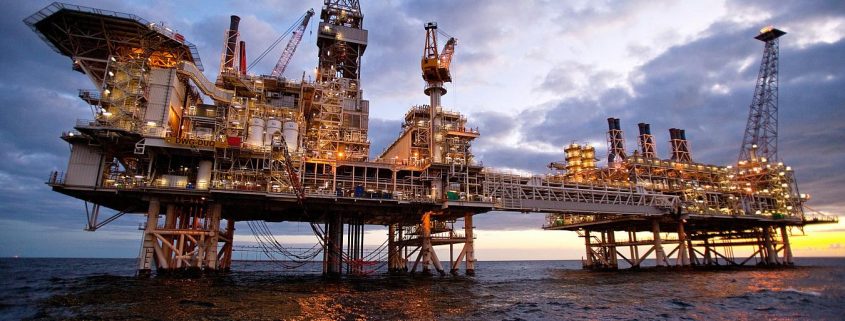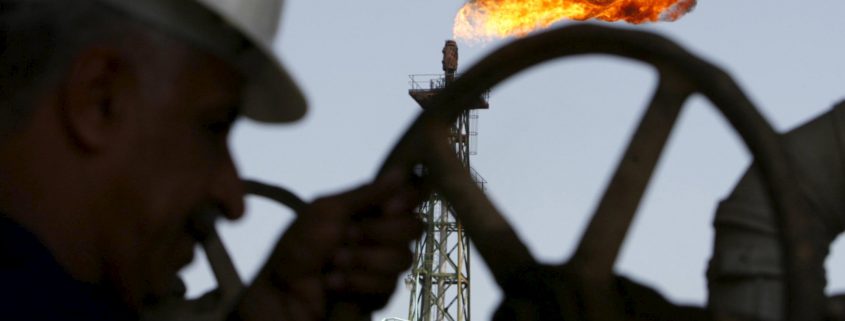Hurricane in Gulf Coast damaging Gasoline & Oil Markets
Hurricane Harvey

During the weekend a huge hurricane hit U.S. Gulf coast!
It crippled Houston and flooded the Texas area. The port in Houston is damaged really serious and it knocked down the crude production in numerous refineries along the shore.
Gasoline prices hit two-year highs, influenced by massive floods caused by the storm. It forced U.S. Gulf Coast to ship orders from across the sea.
Oil market
Observing crude markets, U.S. futures fell. Later, U.S. refinery shutdowns could cause the reduced demand for American crude.
Brent futures also eased.

The Harvey hurricane killed at least 2 people, and it is the strongest hurricane in last half a century. It caused a Houston port closure, while it shut down numeros refineries.
“The U.S. National Hurricane Center (NHC) said on Monday that Harvey was moving away from the coast but was expected to linger close to the shore through Tuesday.”
“The floods would spread from Texas eastward to Louisiana.”
Oil refining in Texas
Oil refining in Texas composes of 5.6 million barrels of refining capacity daily. Louisiana has 3.3 million barrels. The storm shut down over 2 million bpd.
“Spot prices for U.S. gasoline futures surged 7 percent to a peak of $1.7799 per gallon, the highest level since late July 2015, before easing to $1.7281 by 0703 GMT.” (Reuters)
To replace the lost outputs, and in order to avoid fuel shortage, U.S. traders were shipping cargoes from North Asia.










 Firstly, crude Oil Production in Gabon averaged 273.97 BBL/D/1K from 1994 until 2016. Reaching an all time high of 374 BBL/D/1K in August of 1995. And a record low of 205 BBL/D/1K in April of 2015. Secondly, crude Oil Production in Gabon remained unchanged. At 210 BBL/D/1K in March from 210 BBL/D/1K in February of 2016.
Firstly, crude Oil Production in Gabon averaged 273.97 BBL/D/1K from 1994 until 2016. Reaching an all time high of 374 BBL/D/1K in August of 1995. And a record low of 205 BBL/D/1K in April of 2015. Secondly, crude Oil Production in Gabon remained unchanged. At 210 BBL/D/1K in March from 210 BBL/D/1K in February of 2016. In terms of authenticate recoverable reserves. While according to the Oil & Gas Journal (OGJ), Gabon had 2 billion barrels of proven oil reserves. Especially relevant, the end of 2012, Gabon was the fifth-largest oil producer in Sub-Saharan Africa. Due to its position behind Nigeria, Angola, Sudan & South Sudan, and Uganda. Most of Gabon’s oil fields are located in the Port-Gentil area and are both onshore and offshore. Therefore, Gabon’s oil production has been reduced by toward one-third from its peak of 370,000 barrels per day (bbl/d) in 1997. To 244,000 bbl/d in 2012.
In terms of authenticate recoverable reserves. While according to the Oil & Gas Journal (OGJ), Gabon had 2 billion barrels of proven oil reserves. Especially relevant, the end of 2012, Gabon was the fifth-largest oil producer in Sub-Saharan Africa. Due to its position behind Nigeria, Angola, Sudan & South Sudan, and Uganda. Most of Gabon’s oil fields are located in the Port-Gentil area and are both onshore and offshore. Therefore, Gabon’s oil production has been reduced by toward one-third from its peak of 370,000 barrels per day (bbl/d) in 1997. To 244,000 bbl/d in 2012. As a result, the largest field matured and production declined. In process, the other fields emerged and replaced dwindling production. Furthermore, dominant fields have included Gamba/Ivinga/Totou (1967-1973), Grondin Mandaros Area (1974-1988), and Rabi (1989-2010). Most of all the Rabi oil field, as Gabon’s major success, significantly boosted the country’s total output in the 1990s. It reached 217,000 bbl/d at its peak in 1997. Although Rabi is still one of Gabon’s largest producing fields, it has matured and production has gradually declined to about 23,000 bbl/d in 2010.
As a result, the largest field matured and production declined. In process, the other fields emerged and replaced dwindling production. Furthermore, dominant fields have included Gamba/Ivinga/Totou (1967-1973), Grondin Mandaros Area (1974-1988), and Rabi (1989-2010). Most of all the Rabi oil field, as Gabon’s major success, significantly boosted the country’s total output in the 1990s. It reached 217,000 bbl/d at its peak in 1997. Although Rabi is still one of Gabon’s largest producing fields, it has matured and production has gradually declined to about 23,000 bbl/d in 2010.